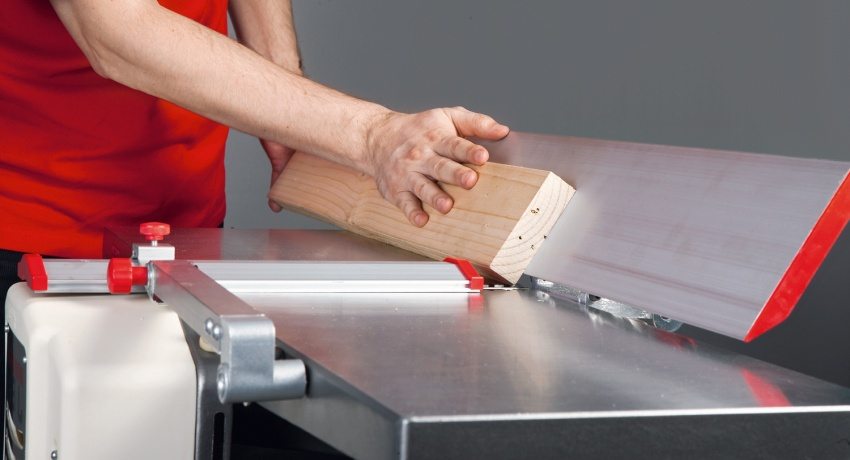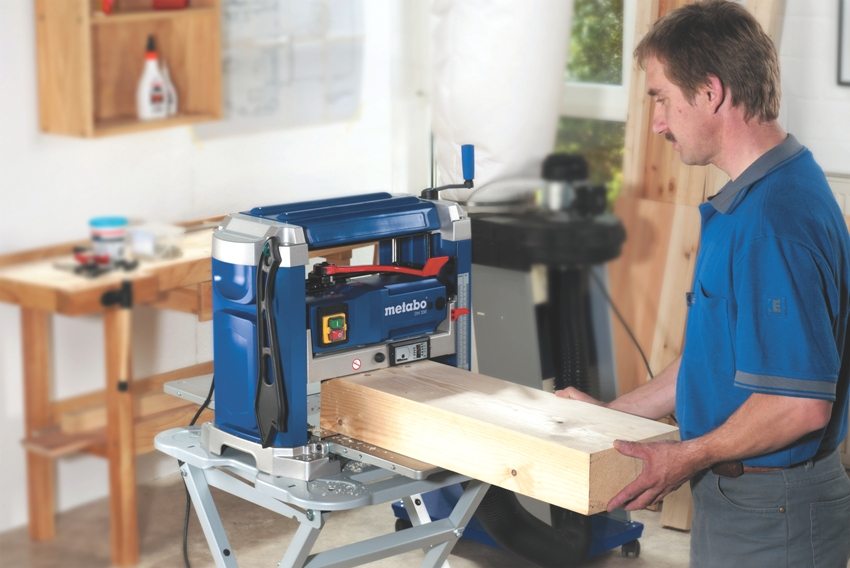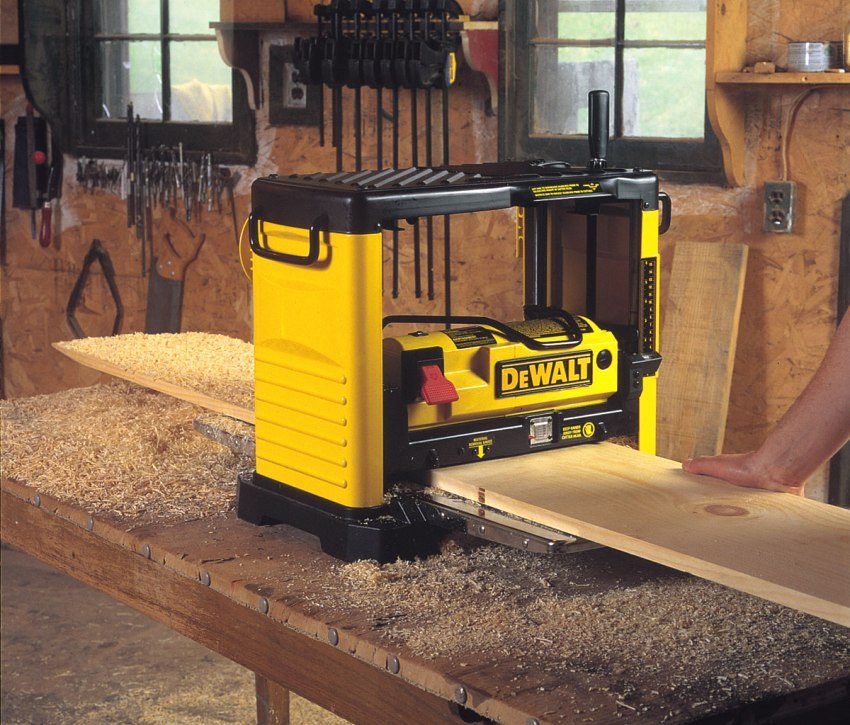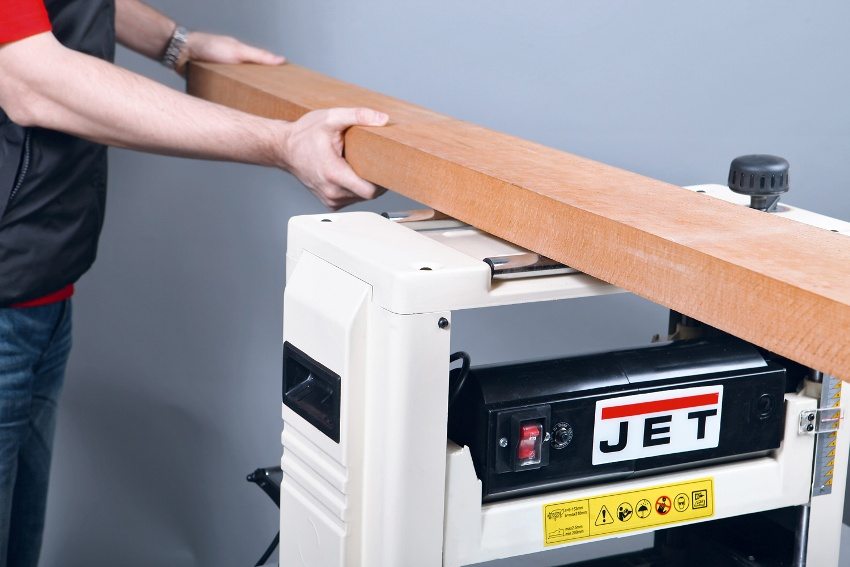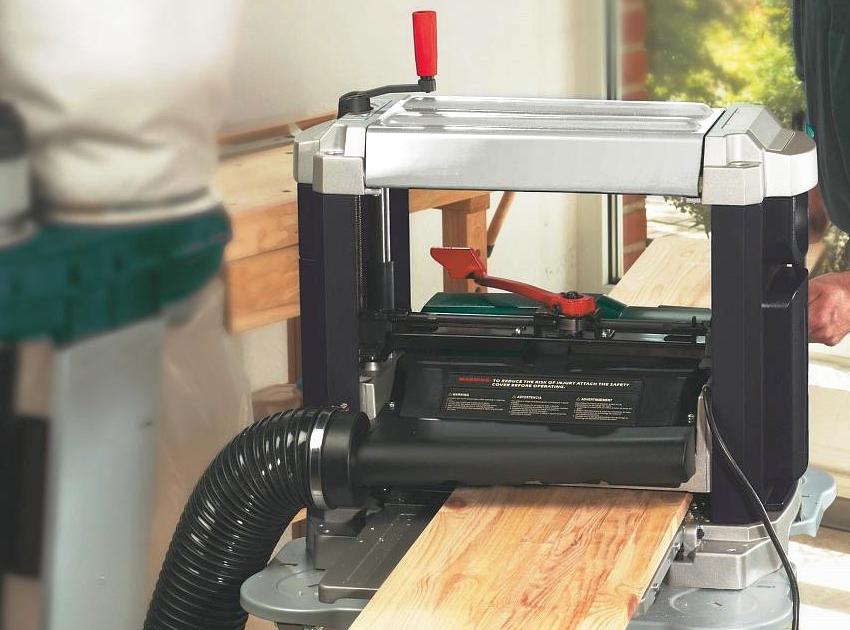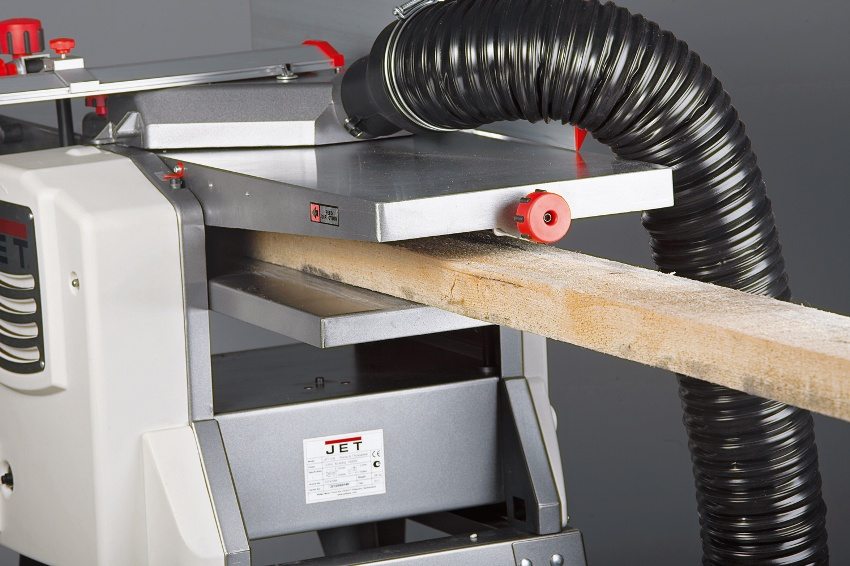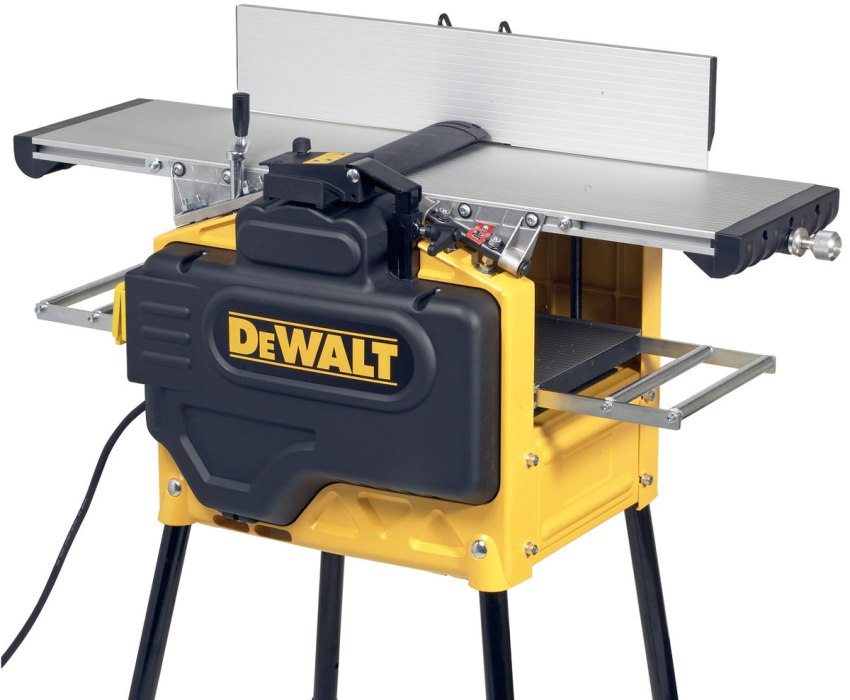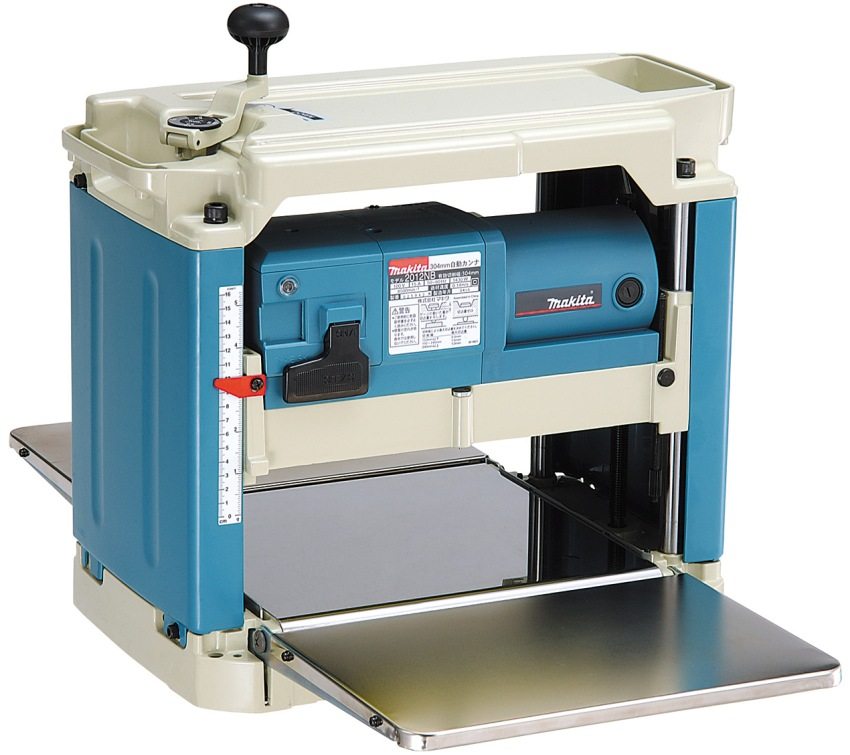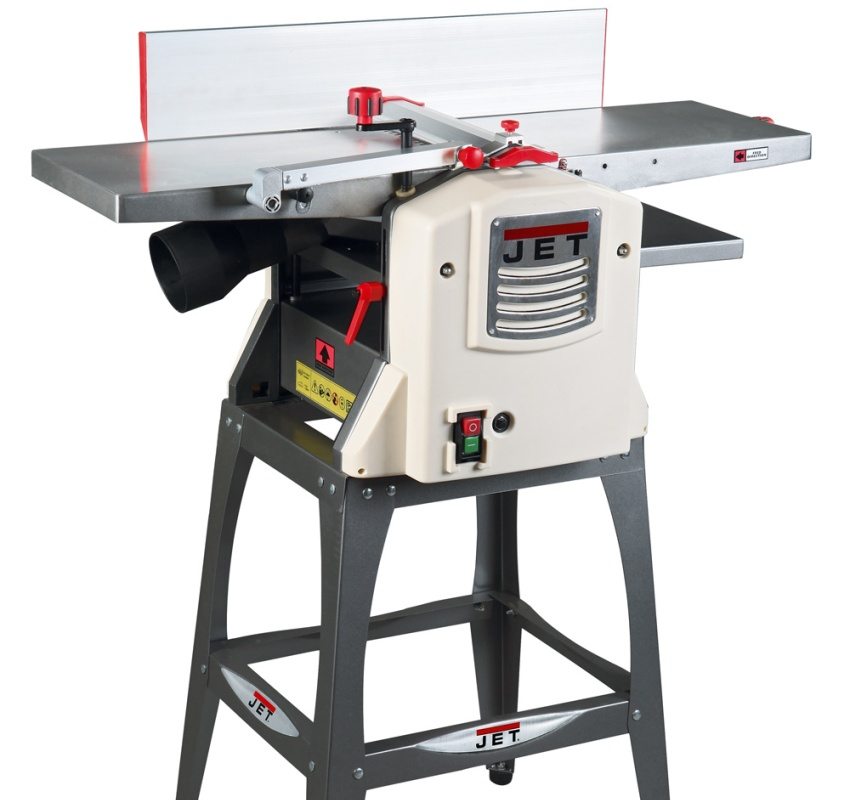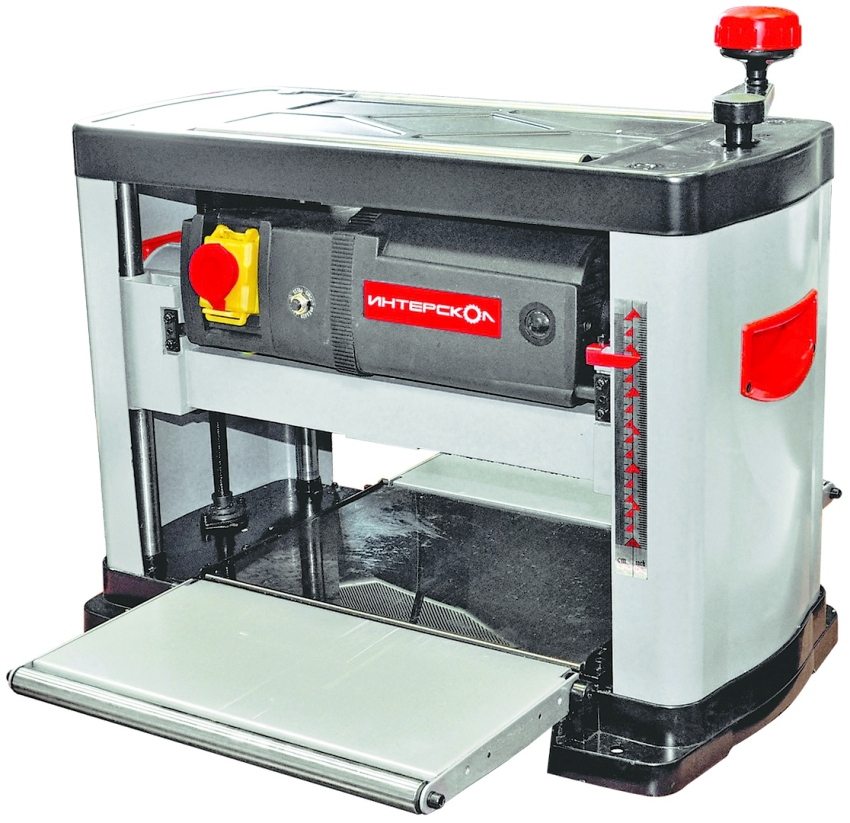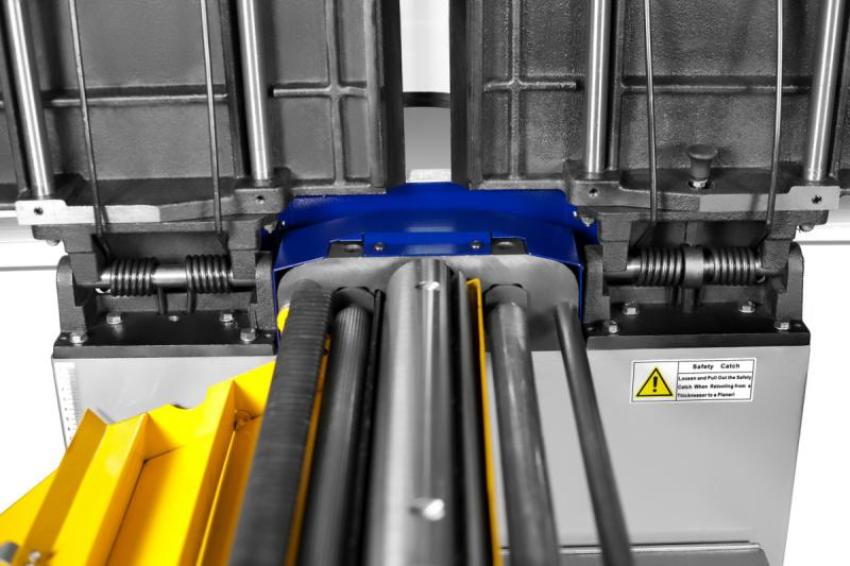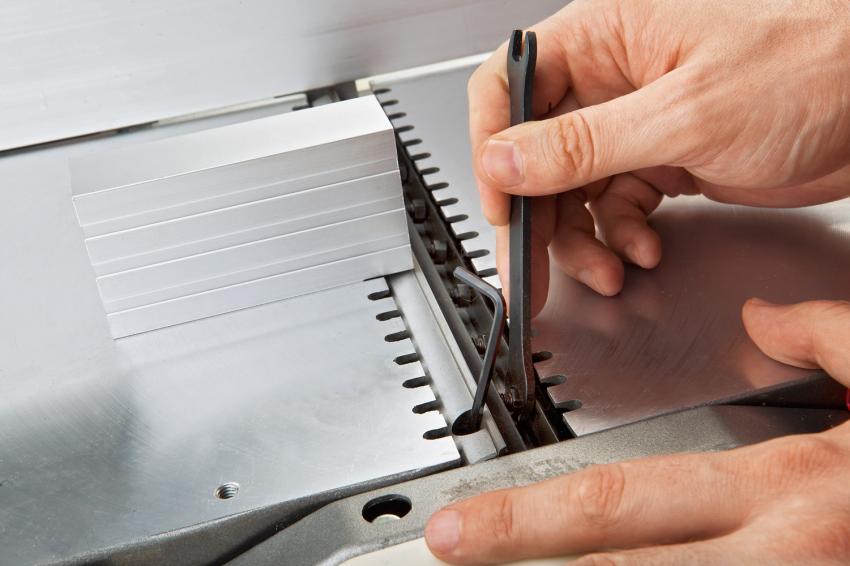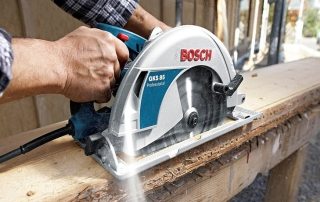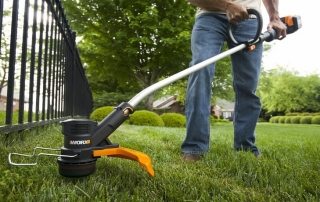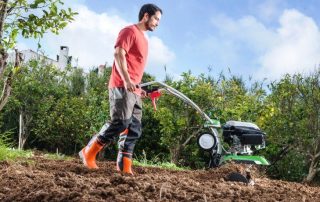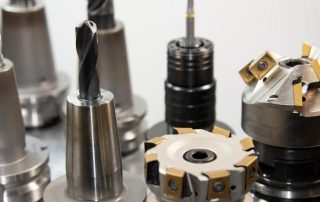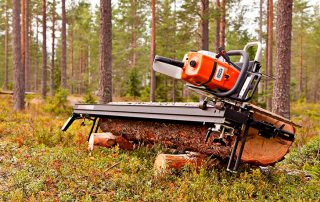The manufacture of wooden blanks in one way or another involves the use of thicknessing machines. The need to fit them to a single size, as well as to give them an attractive appearance, forces the craftsmen to use various devices for this. Consider the difference between wood thicknessing machines: prices, technical characteristics and the most popular models of these devices.
Content
- 1 The principle of work of the thicknessing machine for wood
- 2 Device and technical characteristics of household thicknesser machines
- 3 Features of work on a stationary electric jointer
- 4 Classification and characteristics of planers for wood
- 5 What to look for and how to choose a planer-thicknessing machine for your home
- 6 Thicknesser for wood: prices and characteristics of popular models
- 6.1 Surface gage Makita: advantages, disadvantages and features
- 6.2 Planer-thicknessing machine Kraton: video, reviews and characteristics
- 6.3 Corvette planes: the perfect combination of power and quietness
- 6.4 Thicknesser Jet: the pros and cons of using the machine at work
- 6.5 Thicknesser Interskol
- 6.6 Prices and characteristics of other models of thicknessing machines
- 7 How to independently adjust the thickness planer machine
The principle of work of the thicknessing machine for wood
The main task for which thicknessing machines are used is to smooth the surface of the wood, as well as to calibrate products to one required size. This design is used only for straight planing. In this case, household planes consist of the following elements:
- the main cutting element of the structure, it is also the knife shaft;
- working surface;
- engine;
- rollers.
The working surface of the table consists of two parts. One of them is the host and the other is the host. A knife shaft is located between them, which performs cutting. The element that enters the table is supported by the rollers, thus ensuring smooth and safe cutting.
Note! The part can be fed both automatically and manually. How this will happen depends on the model of the machine.
As a rule, wooden parts arrive at the thicknessing machine after they have undergone primary processing on a planer, but in most cases these two functions are combined in one device. It is on such devices that we will focus our attention today.
By the type of planing, there are two types of machines: for longitudinal cutting and for transverse. Which one to choose depends on what size elements you have to work with. If the details are small, then the first option is used, and if large, then the second.
There are machines that are equipped with several knife shafts at the same time. They, in turn, can be one-sided, two-sided, or four-sided. Such modifications allow the machine to process several parts at the same time.
Device and technical characteristics of household thicknesser machines
The body of the woodworking machine is always made of cast iron and has four support legs. In order for the working surface to be able to move vertically, special lifting screws are installed in the side parts. In modern models, the height of the table can be adjusted using the flywheel, while in simpler or older devices, only the engine can move. At the same time, the table remains stationary.
In the process of work, the disc is located in the horizontal plane of the desktop and, if necessary, is held by special rollers. Its advancement is due to an automatic mechanism or side rollers that rotate simultaneously with the shaft, thus advancing the blank. In order to provide better adhesion to polymer materials, the surface of the roller is rubberized.
Among the most common and demanded improvements of such machines, it is possible to note precisely the possibility of lengthening the working surface, as well as adjusting its height. These parameters determine the ability to process boards of various sizes.
Features of work on a stationary electric jointer
Let's briefly consider how exactly the process of working at the machine takes place. Initially, the planer is designed to plan straight parts from both sides. It happens as follows: the part is placed on the table at an angle of 90 ° relative to the knife shaft. If the material is fed manually, then the part is engrafted with hands from both sides, and gradually fed towards the knives.
Helpful advice! To make the result of the work better, you need to get used to moving the part with only one hand. If you move them at the same time, the work piece will move, which will make the element unusable.
The planing process on a thicknessing machine involves the processing of the remaining sides of the parts. Here, feeding almost always occurs automatically, since only craftsmen with many years of experience can accurately and correctly feed the part by hand. A beginner will have to spoil a lot of material in order to achieve the desired result.
The mechanism of action of a stationary electric jointer is quite simple: two rollers, they are guides, feed the part forward, towards the knife shaft. On the reverse side, the elements are received in an already processed form, and the shavings simply crumble to the floor, or are collected in a specially designated place for this.
It is important to know that if you need to work with long parts, for example, door leaves, the exit part of the table must be long enough to be able to accept them.
Classification and characteristics of planers for wood
Different models of planers have different technical characteristics and, depending on them, are divided into classes. Therefore, before buying a wood thicknessing machine, familiarize yourself with the properties of the products and the associated features of use.
The machines can be divided into groups based on the following indicators:
- the width of the product, the processing of which is possible on this machine. It can be determined by the length of the machine itself. Obviously, it will be impossible to process a part that will not fit on the desktop;
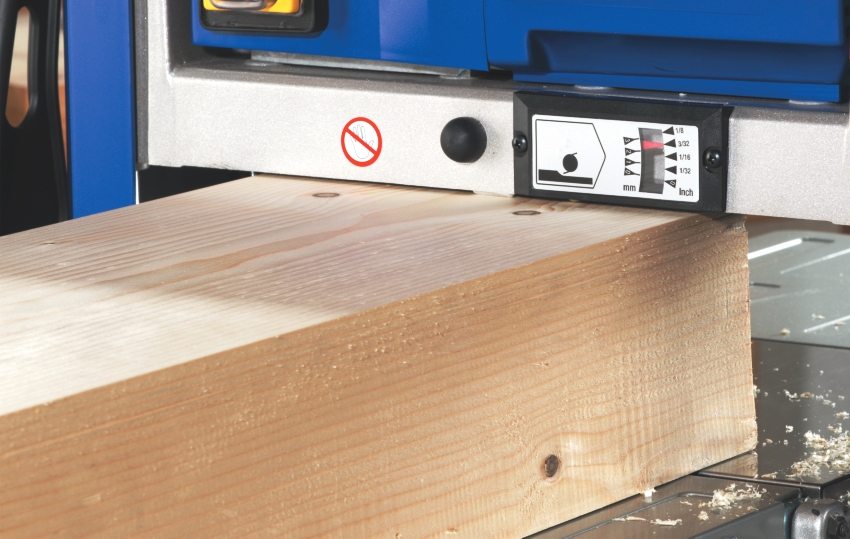
One of the important characteristics of the machine is the thickness of the product that it can process
- the thickness of the product that can be processed.As a rule, household machines that are used at home cannot fully process parts with a thickness of more than 10 mm. For industrial devices, this figure reaches 160 mm;
Note! Many devices allow you to adjust the depth of cut, thanks to a special control unit. It is much easier and more convenient to work with such models.
- the machines also differ in the power of the electric motor installed in them. Depending on what the device is used for, its power can range from 1 to 44 kW. Although the industry uses more powerful devices. For domestic use, models with a low power are chosen, primarily in order to reduce energy costs;
- division into types also occurs according to such an indicator as chip removal. This process can be carried out either manually or be fully automated. It is important here that in the process of work all the shavings are removed, otherwise the quality of cutting wood may suffer noticeably;
- machine models can differ significantly from each other in the degree of automation. So, some devices have additional pedals and even control panels.
All these characteristics can be found in both one-sided and double-sided models. Therefore, you can easily find an option that will suit you both in terms of characteristics and cost.
What to look for and how to choose a planer-thicknessing machine for your home
Suppose you have already completed an assessment of your needs and are ready to purchase the machine model you like. What can get in the way? There are several questions that need to be addressed before making a purchase: determine the installation location and find out if the floor can withstand that weight.
In addition to being located indoors and protected from rain, snow and sun, the machine needs power. Also, the device must be installed in such a way that you can approach it from any side. This is the only way to use it conveniently. This is not always easy to implement, especially in small spaces.
As for the weight of the device, here it is necessary to assess whether the surface on which you are going to install it will withstand such a load. If the weight of the machine is too heavy, experts recommend placing a special plate under the base, which will help to evenly distribute the weight and prevent the coating from deforming.
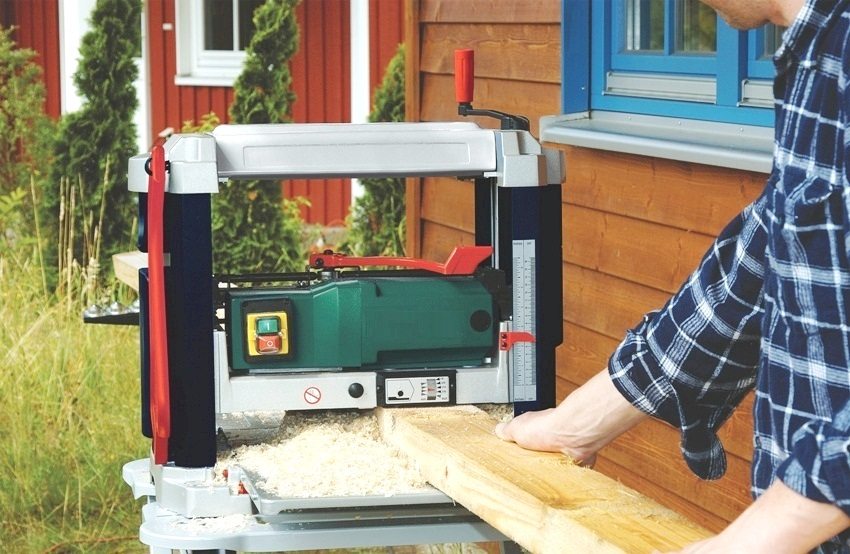
The thicknessing machine emits a certain noise during operation, which must be taken into account when choosing a product
You should also pay attention to the cost of the device. Hardy enough models with an average performance are unlikely to cost less than 20 thousand rubles. Of course, you can find models and cheaper, but they are more suitable for single use, rather than for permanent work.
Helpful advice! Be sure to consider the reputation of the manufacturer whose products you purchase. Read reviews on the forums about the quality of their machines, as well as possible operating features.
Thicknesser for wood: prices and characteristics of popular models
Household planers come in a wide variety of sizes and characteristics. Parameters such as engine power, dimensions and weight can differ significantly from each other, which makes it possible to choose exactly the model that is most suitable for specific purposes.
Consider several popular manufacturers, whose products can be easily found on the domestic market, and pay attention to their offers: machine models, characteristics and cost.
Surface gage Makita: advantages, disadvantages and features
The Makita 2012 NB Thicknesser is one of the most popular options due to its compactness, ease of use, and relatively low weight. The dimensions of the machine are 483x771x401 mm, and the weight is 28.1 kg. The device has an indicator light to indicate readiness for use, and is also equipped with special handles for easy transportation. The average price of the machine is 35-40 thousand rubles.
The advantages of this model include the ability to automatically feed the workpiece, a powerful 1650 W motor, low noise level during operation (up to 83 dB) and the presence of a convenient system with which you can adjust the immersion depth of the knives. Among the shortcomings, one can note the insufficiently thought-out protection of the internal mechanisms from dust and chips, which leads to the need to regularly clean the device to avoid malfunctions.
As the owners of this machine note, it is quite convenient due to the combination of small dimensions and high productivity. In addition, it can be easily found on sale in almost any specialized store.
Helpful advice! If during operation you need to buy planer knives or other components, it is better to contact the same supplier where the machine was purchased.
Planer-thicknessing machine Kraton: video, reviews and characteristics
Among the models produced by the domestic company Kraton, you can find inexpensive options for machines that are perfect for infrequent home use. The Kraton WMP-02 machine has dimensions of 705x410x435 mm (table size 600x230 mm) and weight 12.8 kg. This model is equipped with a branch pipe that allows you to connect a vacuum cleaner. The cost of the machine is 18-24 thousand rubles.
The advantages include a rigid prefabricated structure of the device, the presence of a special casing to ensure the protection of the knife shaft, as well as the ability to adjust the parallel stop along the vertical angle. Among the shortcomings, it should be noted a small power - 1300 watts.
User reviews claim that the main advantage of this machine is its lightness. Compared to other models, it is lightweight, although it should be noted that it also has a little less power. In any case, it will be useful to watch the video reviews that are offered on specialized sites in order to form your own opinion about this device.
Helpful advice! If you are planning to equip your own full-fledged workshop, then it is best to get a machine for sharpening knives for a jointer. This will save yourself the hassle of seeking outside help.
Corvette planes: the perfect combination of power and quietness
As an alternative, you can consider purchasing a Corvette 21 planer with a sliding work surface. It has a large motor power of 1500 W and at the same time the minimum noise level during operation. The machine is distinguished by a rather large weight of 40 kg with dimensions of 610x370x470 mm. The unit price is in the range of 21-25 thousand rubles.
As noted by users, the quiet operation of the machine fully compensates for its heavy weight. And a sliding work surface allows the device to take up less space when not in use.
Thicknesser Jet: the pros and cons of using the machine at work
The Jet JPT 10B planer-thicknessing machine is another modern model designed to facilitate the process of planing workpieces. Its main distinguishing feature is the presence of a special stand or so-called legs that hold the device at the required height. The device provides the ability to adjust the angle of inclination of the parallel stop and the depth of planing.
The dimensions of the model are 980x470x1120 mm, weight is 34 kg, among the shortcomings, users note a high level of noise during operation. The cost of the machine ranges from 34 to 36 thousand rubles.
If you want to buy a planer for wood or thicknessing planer that would perform all functions on a par with powerful and bulky devices, then the Jet JPT 10B is the ideal option.
Helpful advice! Take care of where you place the high-noise machine. Obviously, the further from the living quarters it is installed, the better. It also does not hurt to equip additional noise insulation of the workshop walls.
Thicknesser Interskol
According to the manufacturer, Interskol thickness gauge is the perfect combination of simplicity and quality. A well thought-out design allows full use of this machine in the woodworking industry.
Interskol RS 330/1500 machine with a weight of 33 kg is equipped with a 1500 W motor with a double winding. The device is equipped with overload protection, it is possible to connect a chip pump. The price of the machine is in the range of 27-31 thousand rubles.
Interskol surface gauge occupies a special place in its segment and is found in operation quite often. Reviews of this model of the machine testify to a carefully thought-out and convenient design, as well as an optimal combination of price and quality.
Prices and characteristics of other models of thicknessing machines
Despite the growing popularity of foreign products, some domestic factory machine tools continue to retain their popularity. Let's consider the main characteristics of the four most popular models of thicknessing machines:
| Thicknesser model | power, kWt | Planing width / depth, mm | Drum rotation frequency, rpm | Cutting depth, mm | Weight, kg | Dimensions, mm | price, rub. |
| Mogilev IE 6009A 4.2 | 2,4 | 280/3 | 2300 | 50 | 70 | 870x465x320 | 16000 |
| Sturm WM1921 | 2,1 | 200/3 | 3500 | 70 | 115 | 1130x600x420 | 40000 |
| BELMASH SDMP-2200 | 2,2 | 230/3 | 2800 | 88 | 54 | 819x515x335 | 30000 |
| Energomash DM-19150 | 1,5 | 125/3 | 3500 | 70 | 46 | 680x375x400 | 25000 |
How to independently adjust the thickness planer machine
Another important point that can be useful both in working with the machine is its adjustment. It will definitely be required before starting work, as well as periodically throughout the entire life of the device.
If you do not take the necessary measures to set up the device, over time, the quality of its work will noticeably deteriorate. To prevent this situation, you need to follow simple recommendations and rules that will help keep the mechanism in good condition:
- the smoothness of the surface to be treated directly depends on how evenly the desktop is placed, so make sure that distortions do not appear;
- the appearance of transverse dents on the surface indicates that the roller requires adjustment. Most likely, the reason for the appearance of defects is its excessively low location;
- if you are not satisfied with the smoothness of the resulting surface, try lowering the lower rollers a little lower. As a rule, their incorrect location causes vibration, and, as a result, irregularities;
- pay attention to rear shoe adjustment. It should not exert pressure on the part, otherwise, due to a decrease in the feed rate, the appearance of a groove on the surface cannot be avoided.
- Chips hitting the rear roller often leads to defects on parts, as well as their jam in the mechanism. To avoid this, take care of the correct installation of the cover-up visor.
Ways to eliminate possible problems of the thicknessing machine
Even with very careful handling, the machine is not immune from the occurrence of standard malfunctions for this type of device. In case of their occurrence, it is necessary to start repairs immediately, as this may cause a dangerous situation during operation. Most of these breakdowns can be easily eliminated on their own. Let's consider a few of the most common cases:
- the surface of the worktable is skewed.If this happens, then as a result you will receive non-parallel top and bottom surfaces of the part. To avoid this, it is enough to tighten one of the adjusting bolts;
- excessive pressure of the grooved roller on the workpiece. You can easily notice this problem by the appearance of transverse grooves on the surface of the workpiece. Another problem is that the rollers are too high. In this case, during processing, the workpiece will vibrate or bend, and the surface will eventually turn out to be not even and smooth enough. The solution is roller adjustment;
- an unadjusted rear shoe can also be a problem. While the workpiece is going through the feed rollers, the part will start to lock, although the cutters do not stop their work and continue to move. As a result, a deep notch appears along the entire length of the workpiece;
- and the most common problem is chips getting into the rear roller. This is fraught with the appearance of characteristic grooves on the part that has been processed. The cause of this problem can be an incorrect position of the protective visor or a malfunction of the exhauster.
As the long-term practice of using such structures in domestic conditions shows, it is not enough to buy a planer-thicknessing machine. Like any other mechanism, it requires proper care and attention. However, providing him with this minimum, you can count on his serviceable and accurate work for many years.
